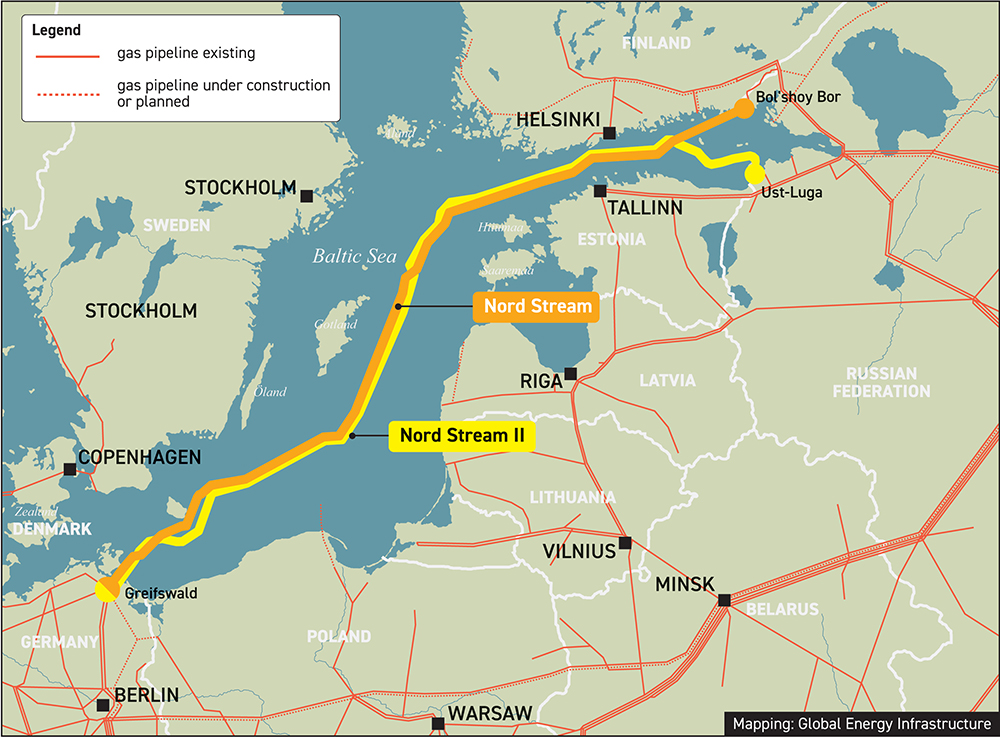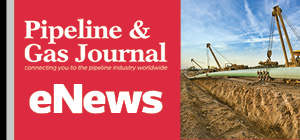April 2025, Vol. 252, No. 4
Features
What’s Next for Nord Stream 2? Expert Eyes Repair and Repurposing Options
Editor’s note: Richard Taylor, offshore construction manager at StreamTec Solutions, who has more than 10 years of experience in offshore pipeline installation projects in Europe, Africa and Asia recently discussed a pair of alternative uses for repurposing the Nord Stream 2 pipelines, and whether they could be repurposed for alternative uses.

P&GJ: Could you tell us the basics of the research you have done into Nord Stream 2?
Richard Taylor: Based on publicly available information, StreamTec Solutions (STS) has compiled a report that provides expert judgements on the current condition of the Nord Stream 2 Pipelines and describes possible alternatives and options for their future use. It also addresses the costs of repair and repurposing, as well as considerations and issues related to permit obligations for a new owner.
P&GJ: What is STS interest in these pipelines?
Taylor: StreamTec Solutions AG was formed from the management team of the Nord Stream project which was completed in 2013. The seven founding partners later held similar positions in the Nord Stream 2 project, which is technically very similar to Nord Stream.
I personally worked on the construction of the Nord Stream 2 pipelines so as a company we have a deep understanding of their technical specifications, operational challenges and potential for future repurposing. Our team of permitting, construction, and material experts collaborated on the report, ensuring it thoroughly addresses all key aspects of repairing and repurposing the pipelines.
We compiled the report as we think it could be of great value to governmental and private organizations who wish to explore the potential for repairing and repurposing the pipelines.
Pipeline Route and Information
For an overview of this project and other related infrastructure developments, visit Global Energy Infrastructure.
P&GJ: Can you provide an overview of Nord Stream 2 pipelines and the current condition of the infrastructure?
Taylor: Nord Stream 2 consists of twin pipelines through the Baltic Sea initially constructed to transport natural gas from Russia to the European Union. The system includes two 1.2m diameter pipeline strings, Line A and Line B, designed to transport 55 billion cubic meters of gas annually.
On Sept. 26, 2022, severe damage caused by explosions occurred on Nord Stream 2 Line A in the Danish and Swedish Exclusive Economic Zones. The pipeline was gas filled and pressurised but had never transported gas from Russia to Germany. Line B is still intact, whilst the two strings of Nord Stream were also damaged by explosives with a single rupture to each line.
P&GJ: What were the findings of the technical study?
Taylor: Line A is ruptured at two locations near the island of Bornholm, approximately 50 miles (80 km) apart. This string is now partly filled with water. However, more than 90% of the pipeline is not flooded and is still filled with natural gas at low pressure.
The corrosion inside the flooded pipeline sections is minimal and does not pose a threat to the pipeline’s integrity, mainly due to the very low levels of oxygen in the Baltic Sea at this depth and the water temperature being low enough to minimise microbial induced corrosion.
P&GJ: Is it feasible to repair the damaged pipeline?
Taylor: Yes, it’s technically feasible to repair Line A. The necessary tools, equipment, and expertise are readily available. If a repurpose use case for the pipelines can be found, then repairing the pipeline would cost significantly less than building a new one and would be more environmentally friendly.
P&GJ: What are the potential future uses of the Nord Stream 2 pipelines?
Taylor: One feasible option could be hydrogen transport, as the pipeline and its steel are suitable for this purpose based on our current knowledge. Other potential uses include repurposing the pipeline to import LNG into the German onshore grid at Lubmin via an offshore re-gasification terminal.
P&GJ: Could you summarize the key takeaways from your report and what you believe the future holds for the Nord Stream 2 pipelines?
Taylor: Line B is still intact and could be repurposed without repair. The damage to Line A is not as severe as initially thought. Repair options are technically feasible, and there are several potential repurposing use cases that offer significant commercial advantages compared to building new infrastructure.
Careful attention needs to be paid to permitting obligations and the permit process for a change of use, but these are likely manageable. These pipelines could play a crucial role in decarbonising Europe by providing clean, renewable energy with a relatively small environmental footprint for repurposing.






Comments